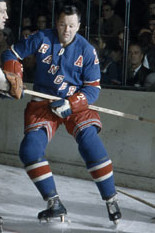Doug Harvey (ice hockey)
Birthday December 19, 1924
Birth Sign Sagittarius
Birthplace Montreal, Quebec, Canada
DEATH DATE 1989-12-26, Montreal, Quebec, Canada (65 years old)
Nationality Canada
Height 5 ft 11 in (180 cm)
Weight 190 lb (86 kg; 13 st 8 lb)
#58945 Most Popular















